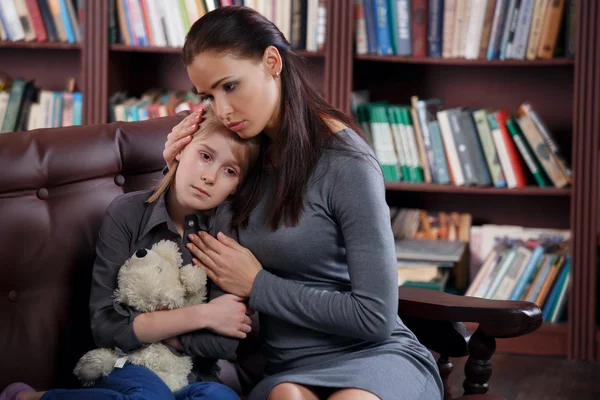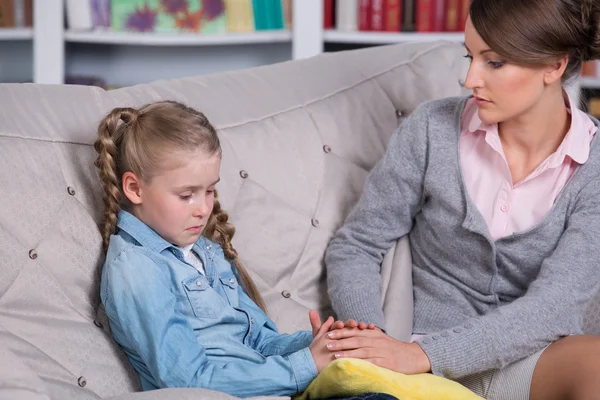A look at “How to Deal With a Traumatized Child?” Dealing with a traumatized child can be a challenging and emotionally taxing experience for parents and caregivers. Childhood trauma can result from various events, such as accidents, abuse, natural disasters, or loss of a loved one. It’s crucial to provide support and guidance to help children heal from their traumatic experiences. In this article, we will explore seven effective ways to assist a traumatized child in their journey toward recovery.
Table of Contents
- 1 Understanding Childhood Trauma
- 2 7 Ways to Help a Child Heal from Trauma
- 2.1 1. Create a Safe and Nurturing Environment
- 2.2 2. Seek Professional Help
- 2.3 3. Encourage Open Communication
- 2.4 4. Establish a Routine
- 2.5 5. Foster Resilience Through Play
- 2.6 6. Offer Unconditional Love and Support
- 2.7 7. Monitor Progress and Adjust Strategies
- 2.8 Here are some additional tips for helping a traumatized child:
- 3 What Expert Says
- 4 Conclusion
Understanding Childhood Trauma

Before diving into strategies to help traumatized children, it’s essential to understand what childhood trauma entails. Trauma can have a significant impact on a child’s emotional and psychological well-being. It can manifest in various ways, such as anxiety, depression, behavioral issues, or even physical symptoms.
7 Ways to Help a Child Heal from Trauma
Dealing with a traumatized child can be an incredibly challenging and emotional experience. As parents or caregivers, it’s our responsibility to provide the support and care necessary for a child to heal from trauma. In this article, we will explore seven effective strategies to help children recover from trauma and rebuild their sense of security and well-being.
1. Create a Safe and Nurturing Environment
One of the most crucial steps in assisting a traumatized child is to establish a safe and nurturing environment. Ensure that the child feels physically and emotionally secure. This can be achieved by maintaining a consistent daily routine, offering reassurance, and actively listening to their concerns. Your presence and support will go a long way in helping the child regain their trust in the world.
2. Seek Professional Help
Trauma can have a profound impact on a child’s mental and emotional well-being. Consulting with a trained therapist or counselor who specializes in child trauma is highly recommended. They can provide the child with the tools to express their feelings and develop coping mechanisms, ultimately aiding in their recovery.
3. Encourage Open Communication
Effective communication is key when dealing with a traumatized child. Encourage them to express their thoughts and feelings without judgment. Listen actively, validate their emotions, and reassure them that it’s okay to talk about what they’ve experienced. This open dialogue can help the child process their trauma and begin the healing process.
4. Establish a Routine
Consistency is reassuring for a traumatized child. Establishing a daily routine can provide them with a sense of stability and predictability. This routine should include regular mealtimes, bedtime, and activities that they enjoy. Predictable patterns can help the child regain a sense of control in their life.
5. Foster Resilience Through Play
Play therapy is a valuable tool in helping a traumatized child heal. Engaging in playful activities can help them process their emotions and build resilience. Encourage creative play, such as drawing, storytelling, or playing with toys. These activities allow the child to express themselves in a safe and non-threatening way.
6. Offer Unconditional Love and Support
Traumatized children often struggle with feelings of guilt and shame. It’s essential to provide them with unconditional love and support. Reiterate that their trauma is not their fault and that you are there to support them through their healing journey. This unwavering love can help rebuild their self-esteem and self-worth.
7. Monitor Progress and Adjust Strategies
Healing from trauma is a gradual process, and it’s essential to monitor the child’s progress regularly. Keep an eye out for any signs of improvement or regression. Adjust your strategies and interventions accordingly. Remember that every child is unique, and their healing journey may take time.
Here are some additional tips for helping a traumatized child:

- Be consistent. Children need to know what to expect from you, so try to be as consistent as possible with your routines and expectations.
- Be patient. It may take time for your child to heal from trauma. Don’t get discouraged if they don’t seem to be making progress right away.
- Be positive. Help your child to focus on the positive aspects of their life and to believe in their ability to heal.
- Get support for yourself. It can be challenging to help a traumatized child, so make sure to get support for yourself as well. Talk to a therapist, join a support group, or find other ways to take care of yourself.
If you are concerned that your child may have experienced trauma, please reach out to a mental health professional for help. They can assess your child’s needs and provide the appropriate treatment.
What Expert Says
The tips I have mentioned are based on the recommendations of experts in the field of child psychology and traumatology. Here are some of the experts who have spoken about how to help a traumatized child:
- Dr. Bruce Perry: Dr. Perry is a renowned child psychiatrist and neuroscientist who has written extensively on the effects of trauma on children. He is the author of the book “The Boy Who Was Raised as a Dog: And Other Stories from a Child Psychiatrist’s Notebook”.
- Dr. Judith Herman: Dr. Herman is a clinical psychologist and professor of psychiatry at Harvard Medical School. She is the author of the book “Trauma and Recovery”.
- Dr. Nadine Burke Harris: Dr. Burke Harris is a pediatrician and the founder of the Center for Youth Wellness in San Francisco. She is a leading advocate for the recognition of childhood trauma as a public health issue.
- Dr. Dan Siegel: Dr. Siegel is a clinical psychologist and author of the book “The Whole-Brain Child: 12 Revolutionary Strategies to Nurture Your Child’s Developing Mind”.
- Dr. Wendy Mogel: Dr. Mogel is a clinical psychologist and author of the book “The Drama of the Gifted Child: The Search for the True Self”.
These are just a few of the many experts who have written about how to help a traumatized child. If you are concerned about your child’s well-being, I encourage you to reach out to a mental health professional for more information and support.
Conclusion
Dealing with a traumatized child requires patience, empathy, and a commitment to their well-being. By creating a safe environment, fostering open communication, seeking professional help when needed, establishing routine, building resilience, and offering unconditional love and support, you can help a child heal from trauma and lead a fulfilling life.
Frequently Asked Questions (FAQs)
- What are common signs of childhood trauma? Childhood trauma can manifest in various ways, including anxiety, depression, behavioral problems, nightmares, and flashbacks.
- Is it normal for a child to show delayed reactions to trauma? Yes, it is normal for some children to exhibit delayed reactions to trauma. It’s essential to be patient and supportive as they process their experiences.
- How can I find a qualified therapist for my traumatized child? You can start by asking for recommendations from your child’s pediatrician or school counselor. Research therapists who specialize in working with children and trauma.
- Are there any support groups for parents of traumatized children? Yes, many support groups cater to parents and caregivers of traumatized children. These groups can provide valuable insights and emotional support.
- Can childhood trauma have long-lasting effects into adulthood? Yes, childhood trauma can have lasting effects on mental and emotional well-being. However, with proper support and therapy, individuals can learn to manage these effects and lead fulfilling lives.
Don’t miss | 5-Minute Daily HIIT Workout To Melt Hip Fat









